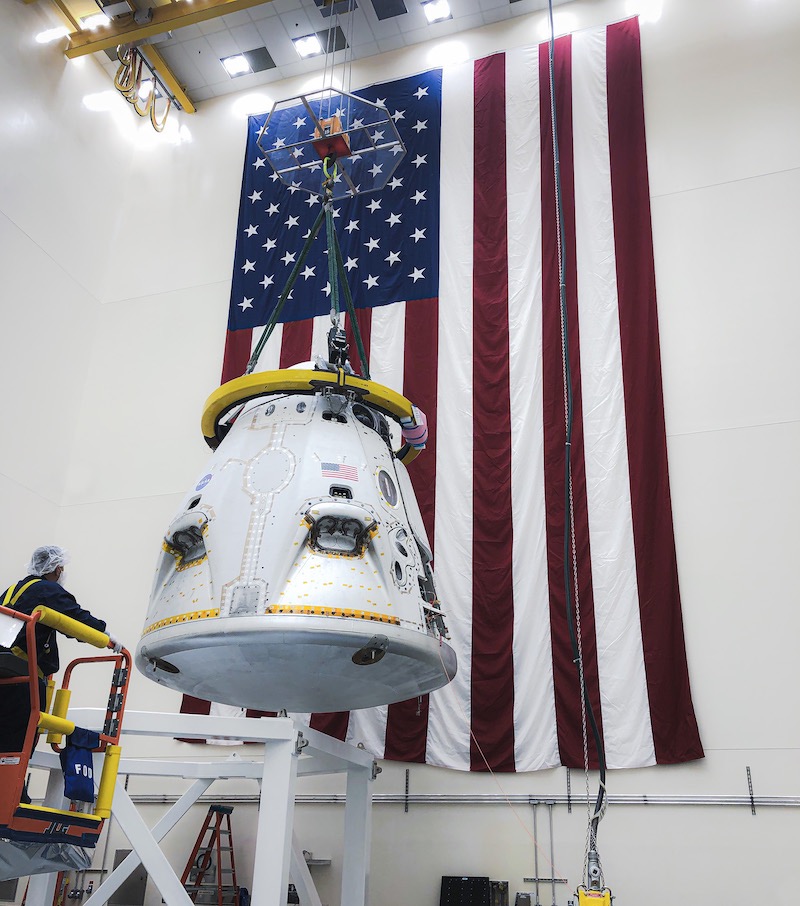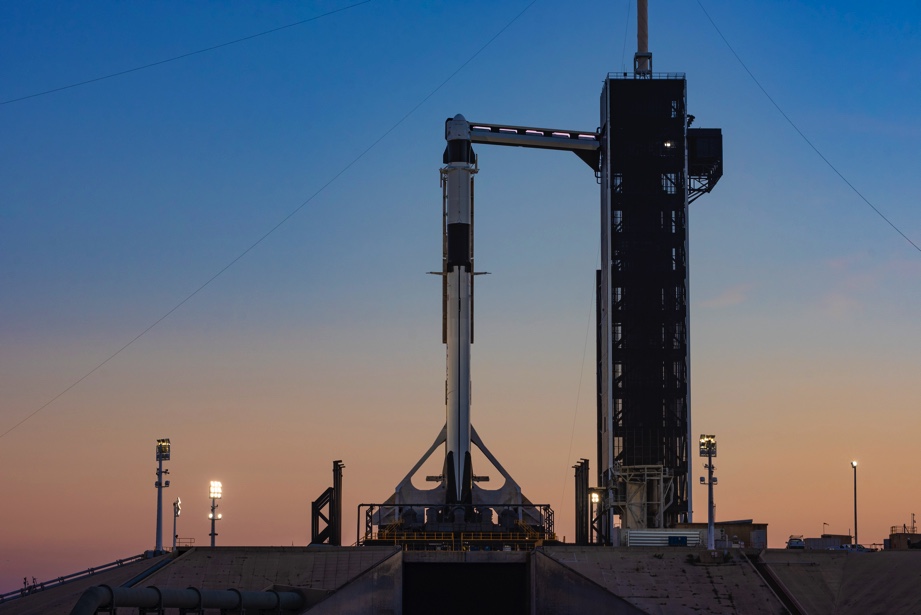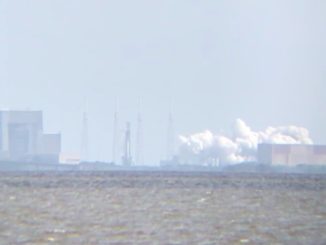
The final major test of the high-power launch abort engines on SpaceX’s Crew Dragon spacecraft before astronauts climb aboard for a flight to the International Space Station is scheduled for Jan. 18 from NASA’s Kennedy Space Center in Florida, NASA announced Monday.
The test launch was previously scheduled for Jan. 11. The delay to Saturday, Jan. 18, allows additional time for spacecraft processing, according to NASA.
SpaceX Crew Dragon capsule will not go into space on the upcoming abort test flight. Instead, SpaceX and NASA want to test the ship’s ability to safely carry its crew away from an in-flight emergency during launch.
The in-flight abort test will involve a full-up Crew Dragon spacecraft, with all its engines, computers and other key systems, launched atop a full-size Falcon 9 rocket from pad 39A at NASA’s Kennedy Space Center in Florida.
SpaceX will launch the Falcon 9 rocket from pad 39A to simulate a crewed flight to the International Space Station, but the launcher’s first stage engines will be programmed to shut down about a minute-and-a-half after liftoff. The premature engine cutoff will be followed by an automated abort command on the Crew Dragon spacecraft, triggering ignition of the ship’s eight SuperDraco escape thrusters.
The SuperDraco engines will rapidly power up to full throttle, producing up to 130,000 pounds of thrust for less than 10 seconds to push the Crew Dragon capsule away from the top of the Falcon 9 rocket.
The in-flight abort test is timed to demonstrate the capsule’s escape system under the most extreme aerodynamic forces during launch.
Smaller thrusters will orient the crew capsule for separation of its unpressurized trunk, then deployment of parachutes before splashing down in the Atlantic Ocean east of Cape Canaveral.
The test window is believed to open at 8 a.m. EST (1300 GMT) on Jan. 18.
The Falcon 9 booster is expected to break up due to extreme aerodynamic loads during the abort sequence.

SpaceX performed a test of the Crew Dragon abort system in 2015 to simulate an escape maneuver from the launch pad.
The Crew Dragon’s first mission to space last March was a success. After launch from the Kennedy Space Center, the unpiloted capsule docked with the International Space Station and returned to Earth for a splashdown in the Atlantic Ocean.
The smooth test flight appeared to set the stage for the Crew Dragon’s in-flight abort test later in 2019, followed by the first Crew Dragon mission with astronauts on-board.
But the Crew Dragon spacecraft exploded during a ground test at Cape Canaveral less than two months after returning from the space station, prompting an investigation and redesign of parts inside the pressurization system that feeds the high-pressure abort engines.
SpaceX determined the abort engines themselves were not at fault in the explosion, which occurred moments before the SuperDraco thrusters were supposed to ignite for a firing on a test stand at the Florida spaceport. Engineers traced the cause to a leaky valve in a line between the Crew Dragon’s propellant tanks and the SuperDraco engines.
After readying a replacement Crew Dragon spacecraft — and replacing the faulty valve with a “burst disk” — SpaceX performed the SuperDraco test-firing at Cape Canaveral in November with no major issues, paving the way for the in-flight abort test expected later this month.
The in-flight abort demonstration is the final major test flight in SpaceX’s crew program before NASA clears the next Crew Dragon spacecraft to carry astronauts. The ship’s first piloted mission, designated Demo-2, will carry NASA astronauts Doug Hurley and Bob Behnken to the International Space Station.
SpaceX announced last month that it completed its 10th consecutive successful multi-parachute drop test using the Crew Dragon’s new Mark 3 parachute design, which was developed in response to concerns about the reliability of a previous iteration of Crew Dragon parachutes.

In a tweet Dec. 29, SpaceX founder and CEO Elon Musk wrote that the Crew Dragon spacecraft assigned to the Demo-2 mission should be at Cape Canaveral and “physically ready” for flight in February.
“But completing all safety reviews will probably take a few more months,” Musk tweeted.
SpaceX is developing the Crew Dragon under a $2.6 billion contract awarded by NASA’s commercial crew program in 2014. NASA also has a $4.2 billion commercial crew contract with Boeing to develop the Starliner spaceship.
Boeing’s Starliner spacecraft has performed a pad abort test and flew its first orbital test flight in December.
But both unpiloted test flights encountered problems, first with a “mis-rigged” parachute that failed to deploy on the pad abort test, then with a mission timer that prevented the Starliner from docking with the space station as planned on the first orbital mission.
Boeing’s Starliner capsule successfully landed in New Mexico after the abbreviated orbital test flight, which officials said achieved most most of the required objectives despite not reaching the space station.
NASA and Boeing are reviewing data from the test flight before determine if astronauts can be cleared to fly the next Starliner mission — as originally intended — and when that mission might be ready for launch.
Email the author.
Follow Stephen Clark on Twitter: @StephenClark1.



